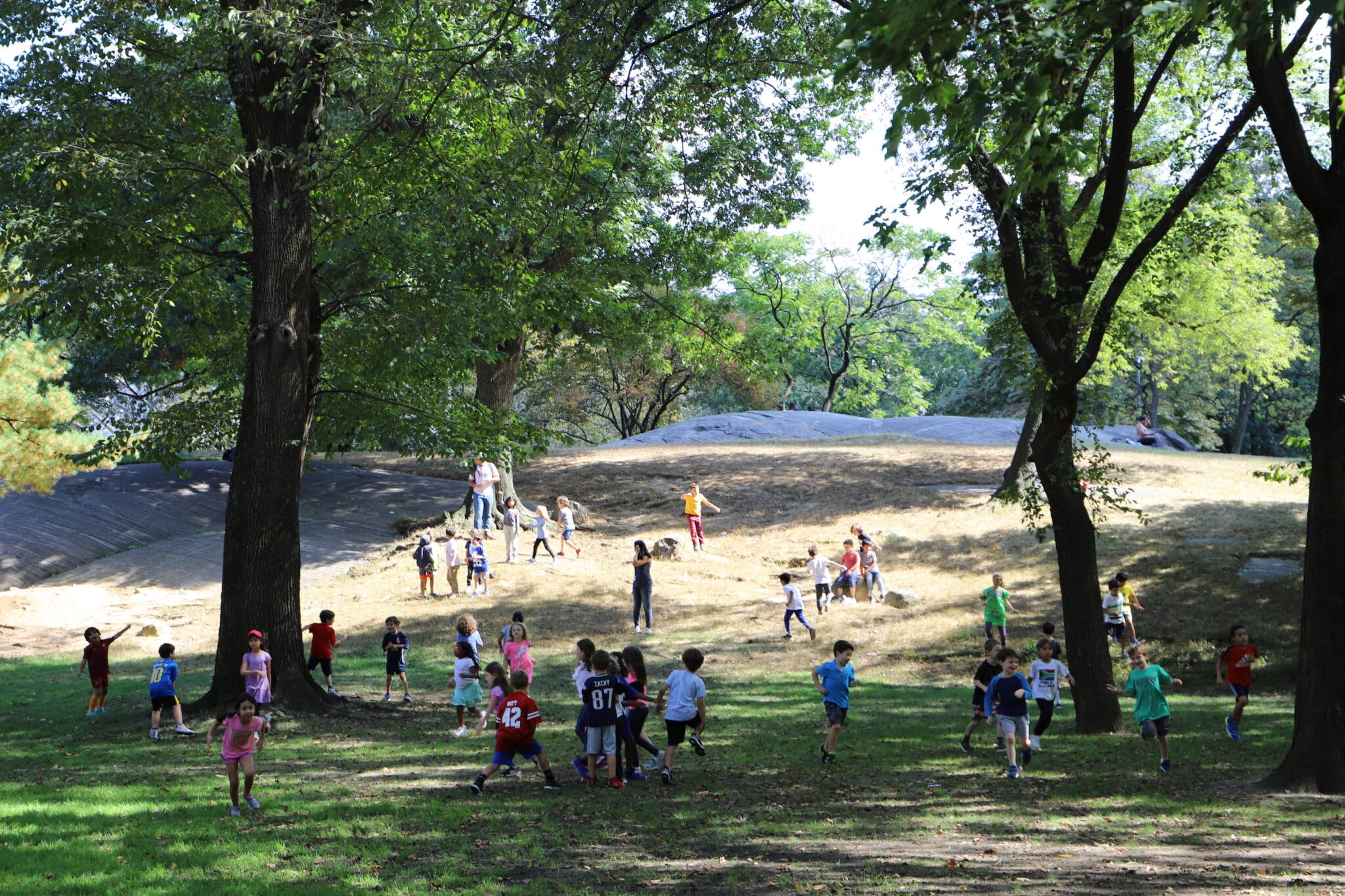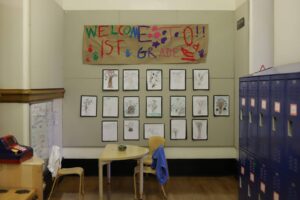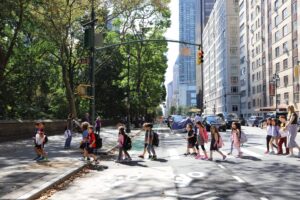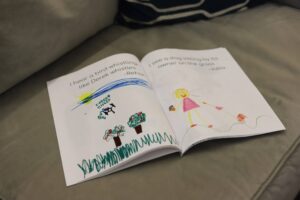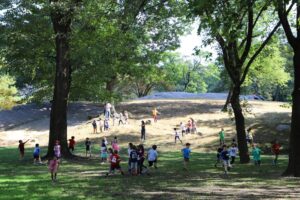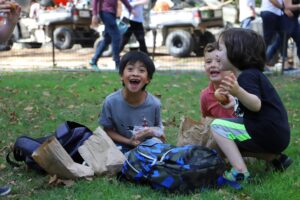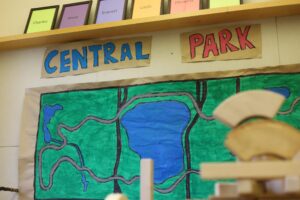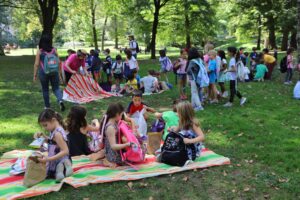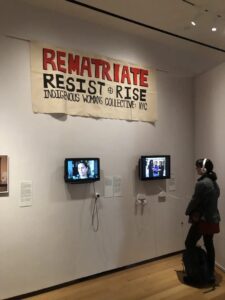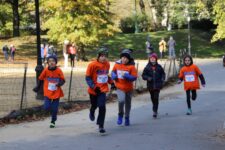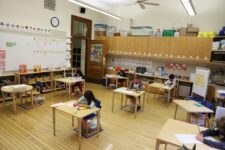First-time visitors to Ethical Culture are often struck by the impressive views of Central Park. Thanks to the building’s prime location on Central Park West, you can trace the passing of seasons from the entrance steps, from the rooftop, or from any eastern-facing window in the building, as verdant leaves burn vermilion in the fall and new buds emerge from fields of white in the spring.
It’s a vista that’s inspired many a poem, song, or essay about New York City. At the Ethical Culture Fieldston School — where experiential learning is central to the school’s commitment to progressive education — it’s also inspired an entire curriculum. Nowhere is that more apparent than in 1st Grade, when students regularly spill out of the classroom and into one of the most beloved green spaces in the city.
See, touch, sketch, imagine: Central Park as inspiration
For students at an age when the five senses are still the primary gateway to learning, Central Park is a treasure trove. What the park provides for unparalleled visual stimulation, its tactile and auditory offerings can be sources of inspiration as well. In José Ramos’ class, 1st Graders forage for stones and acorns outside, later manipulating the same smooth and rough surfaces as they group them into various configurations and count them one by one. In Barbara Lancaster’s class, the picture book that students collectively author becomes a sort of “audiobook” as well: next to illustrations of trees and horse-drawn carriages are captions describing the “crunch crunch crunch” of squirrels eating acorns and the “clak clak clak” of hooves.
As with much of the curriculum at ECFS, the study of Central Park is interdisciplinary. In science class, Beverly Chang takes 1st Graders to perform fieldwork in the park, where soon-to-be biologists hunt for insects, mammals, and other critters and later document their findings in e-books. In woodshop, Leonard White helps students transform their sketches of the park into jigsaw puzzles, tracing and cutting the outlines of individual pieces.
Alex Checkman hopes to use Central Park as a tool to teach mapping skills and basic geography to her 1st Graders. As the year progresses, students will look at historical maps of the park, create their own mural painting of a map in the classroom, annotate their map with features they’ve visited, and even build a three-dimensional model out of blocks.
A lens for unpacking ethical questions
Before Central Park became Manhattan’s green lung, the area was known as Seneca Village, a settlement of predominantly African Americans who were forcibly displaced to make room for the park.
Checkman addresses this paradox with her 1st Graders. “We have this really wonderful resource, but a group of people were forced out of their homes so that the park could be built, and this truth is something that we need to address.” The idea of accessibility also factors in; even when the construction of Central Park was complete, limited opening hours and a lack of public transportation precluded low-income communities from enjoying the space. As 1st Graders begin to understand the world beyond their immediate selves, they also start to consider the privilege of having near-unlimited access to the park.
Two years ago, the 1st Grade teachers took a fresh look at the curriculum in an attempt to realign it with the school’s commitment to ethical education. Now, in class, Central Park serves as a vehicle through which students begin to investigate questions concerning the wants and needs of a community and how decisions impact different communities in different ways. The social dilemma of constructing a park in a bustling city where space is limited becomes an opportunity for 1st Graders to engage in perspective-switching.
The ultimate playground at ECFS
You haven’t witnessed true joy until you’ve seen a few dozen 1st Graders running wild through a park.
Wednesday, September 25, marked the first time students in all 1st Grade classes at Ethical Culture came together as a community. For two hours, they mingled in a shaded clearing in Central Park, sharing lunches, sitting with clusters of friends in other classes, and frolicking in the grass.
Play is a crucial component of early education at ECFS. Not only is it developmentally appropriate, but it also creates opportunities for social interaction — and the friction that social interaction might engender. (One child, a game of tag gone awry, confronts his friend: “You can’t do that! It’s not nice!”) How students work out their differences marks an early lesson in conflict resolution, a skill they will continue to refine in their social-emotional growth.
Danielle Redd was excited to see her 1st Graders exploring and using their imaginations. “Many of them had their sticks and were digging for ‘crystals,’ and they were able to bring their treasures back to the classroom to share,” she says.
As the year progresses, we’re excited to see the many treasures — natural, imagined, and learned alike — our 1st Graders bring back to the classroom from their adventures in Central Park.
